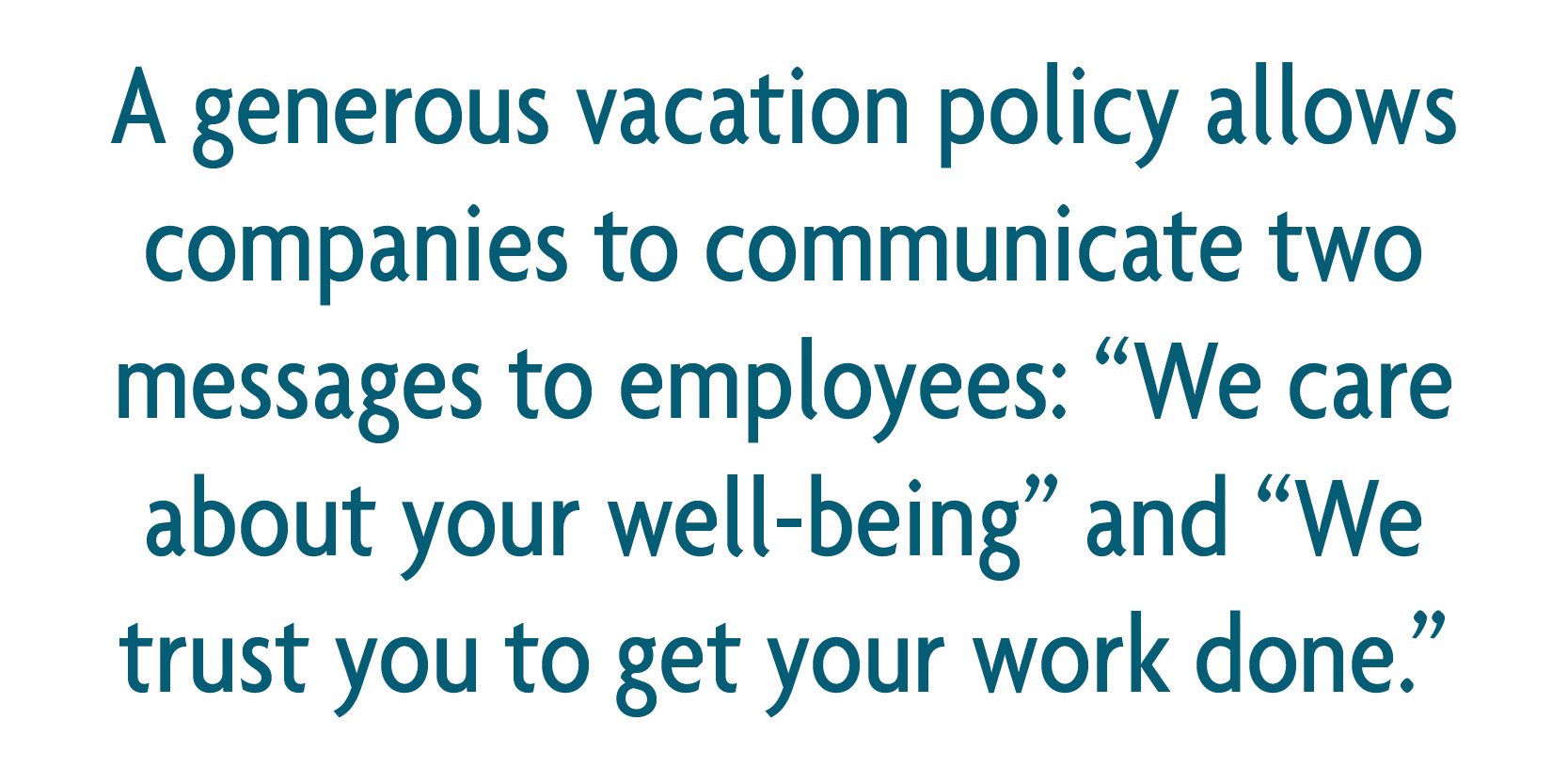Summer is here. This week we celebrate Independence Day, the kickoff of the summer vacation. At least it was. How should you handle employee vacations in the time of COVID?
Employees want time off
When we look at what motivates our best employees, money usually does not top the list. For many employees, time is the most valuable currency.
In a study by Korn Ferry 30% of workers said a paid vacation, followed closely by flex time (20%) and additional time off (18%) were performance bonuses they would like to receive.
The irony is, however, that while 97 percent of companies offer paid time off, American employees are not using all of their days. Even before COVID-19, American vacation use was at its lowest point in 40 years. More than half of Americans don’t use all of their vacation.
Approximately 758 million vacation
days went unused in 2018.
The big question
If good employees want time off, why aren’t they taking it? The answer is fear. In spite of wanting the time off, employees are afraid to use it. What are they afraid of?
- Returning to a mountain of work
Employees are handling heavier workloads and worry that they will return from vacation with more work than they can handle. Many do not feel that there is coverage for their position, so they have a double whammy of guilt that they are leaving their coworkers hanging or burdening another with their tasks.
- Job elimination
61% of respondents demonstrated fear that they would look replaceable while they were away. They don’t take time off to ‘be visible’ out of fear for their job. In the time of uncertainty, employees may stockpile their time off against potential layoff.
- Company culture
In companies that reward visibility over productivity employees don’t want to appear out of step with the values of the organization. They forgo their vacation simply to fit in.
The cost of overwork
Science tells us repeatedly that all work and no play . . . makes an unhealthy workplace.
Vacation time is essential for physical and mental wellness. Employees who take time away have lower anxiety and cardiovascular disease, depression, and stress-related health issues.
Attracting and retaining quality employees is a strategic priority for many workplaces, yet employee burnout contributes to approximately 50% of turnover.
The upside
When an employee uses their vacation, it benefits both the employee and the organization.
Vacations impact health
According to scientists at the University of California, San Francisco a resort vacation not only improves energy and reduces stress, it also has an immediate impact on the molecular networks associated with stress and immune function. Participants who attended a mediation retreat also showed a boost in antiviral activity.
Vacations impact productivity
Another study published in Science Daily showed that backpackers scored 50% better on creativity after four device-disconnected days in nature.
Results from a study by Project: Time Off indicated that the best workers are those who use their vacation benefits. 70% who regularly take a week-long vacation said they are driven to contribute to the organization’s success and 65.4% of those who took more than 10 days of vacation received a bonus or raise.

~ Adam Waytz
Putting it into practice
The 2020 summer vacation will look remarkably different in the current environment. The need for rejuvenating time off, however, is more important than ever before.
The impacts of the multiple events of 2020 including COVID-19, racial tensions, and the 2020 election season are creating new and unique stressors on your employees. They are trying to process fear over what is happing in the world while managing the logistics of working from home, social isolation, homeschooling, and a general feeling of loss of control.
The overwhelm of managing long-term stressors in this environment can bring a person to the breaking point. Your employee may exhibit unusual behaviors, emotional outbursts, or a decline in performance.
Time away and flexibility with work schedules can be powerful elements in your leadership toolkit if your employee can overcome fears and embrace the benefits of vacation.
It is up to you as the leader to create a culture that embraces and encourages your team to use this benefit in a healthy way.
Create healthy boundaries: Set expectations about appropriate business hours. Do not encourage employees to answer emails and phone calls after hours or during time off.
Trust your employees: Allow your employees to focus on tasks and priorities rather than time. Disconnect the calendar and clock from your employee’s value to the company.
Be creative: Staycations, road trips, and camping may be the vacations of 2020. Encourage your employees to enjoy their days off with negotiated discounted rates or gift cards to area attractions.
Schedule it: If it isn’t scheduled, it isn’t real. Create a team vacation calendar to ensure that department priorities are being met and that there is adequate coverage for the business. Your employees can relax on their vacation knowing that there won’t be a pile of work and dropped balls when they return.
Model behavior: If you aren’t taking time off your employees won’t either. Book your vacation.


